There you go again crying over the onions. Is there any way to stop it?
Almost all of us must have been in that familar situation. The situation of feeling tingles and the situation of having stinging eyes followed by tears. Why on earth would the unassuming onion, a very important ingredient in our everyday practice of cookery or activity of cooking be so disheartening to cause us such discomfort.
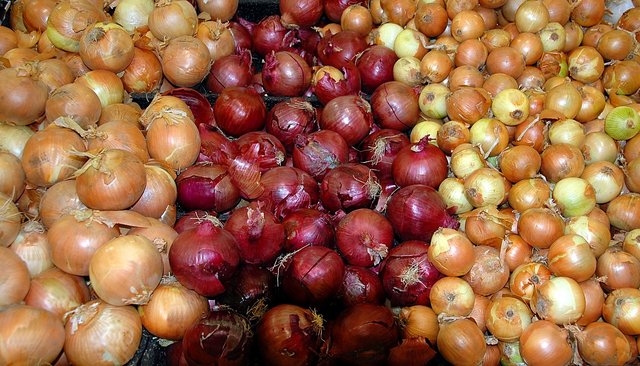
It's no more news that "Life is all about reproduction and survival". This is very true not only for animals but for plants as well. Onions are not exempted or taken out. Onions provides protection to itself from predators cosumed by their selfish desires that might want to feed on its bulbs. Due to this, a volatile chemical that causes such discomfort as stated above to our eyes are released by these innocent onions, which appears to me as if they meant no harm to we humans but they are just trying to fulfil what I call a law of nature which stated that "life is all about survival and reproduction".
According to the National Onion Association (NOA), the official organization whose mission is to represent brokers, shippers, commercial representatives and growers of the United States Onion industry which was founded in 1913, it was reported that approximately 170 countries across the globe deals in the cultivation of onions and it was estimated that a massive number of 9.2 million acres of onions are harvested once every year without fail at various places all across the universe.
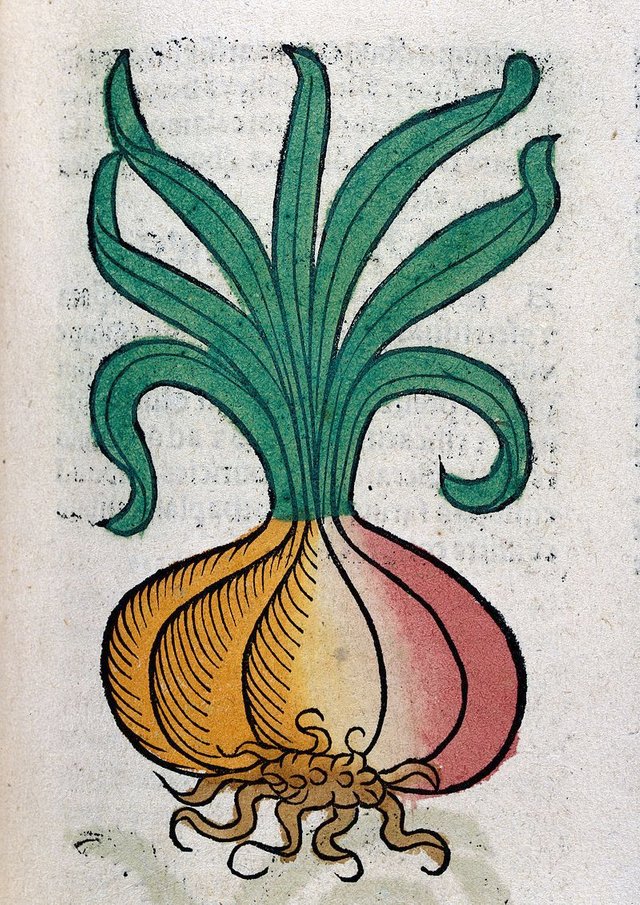
It is no less than 7,000 years from now that onion plant has been grown and bred in cultivation in a selective manner. Onion is a plant that belongs to the Allium family and they are commonly grown as an annual plant despite the fact that it is a biennial or perennial plant. This means that a tasty bulb that perform the function of energy storage is formed during the first year of their life cycle, and a flower and seeds are produced by the plant in the second year of their life cycle for reproduction to happen.
The use of onions as food ingredient can be traced back to have kicked off in Egypt, China and Persia thousands of years ago. Onions are very rich in vitamins, minerals and antioxidants plus they are low in calories. They are usually cut or diced into small pieces and used as ingredients in various dishes. Their use as an ingredient in omelets, salads and guacamoles's recipes give it a very good taste and maybe you should give that a trial if you haven't... Smiles!
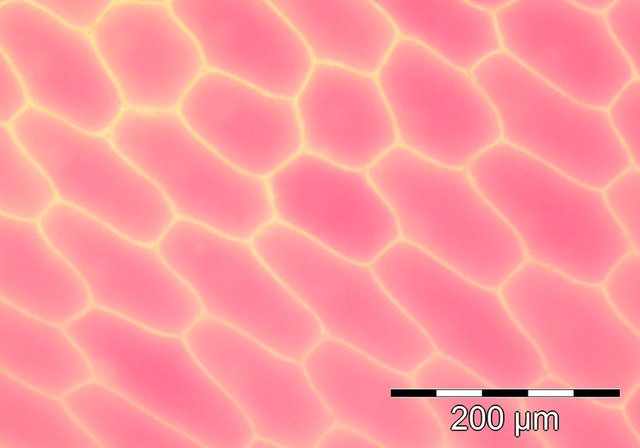
The large cells possessed by onions can easily be viewed under a magnification that is low. The ease of seperating bulb epidermis from onions is due to the single layer of cells formed, and therefore makes it useful for experimental, educational and breeding purposes. The observation of cell structure with microscope in science education is best taught using onions as a case study. Onions have a harmful chemical that makes it poisonous to guinea pigs, dogs, cats and quite a number of other animals.
I think we've gotten a concise general knowledge of onions and now, we will waste no time to get to the main point which talks about why onions makes us cry. Well, well, well, Onions are just another kind of vegetable consumed by humans, but maybe it has never occured to you to ask yourself some rhetorical questions about onions that: Why do onions make us cry? And why do some onions get tears to drop from our eyes while others, not excluding related Allium plants such as garlic will almost not at all draw a tear from our eyes when cut or diced into small pieces. You've got no worries, cause i will be giving answers to those questions in the next few minutes.
Eric Block, a chemist at the University at Albany in New York once said that the chemistry of onions (which is only a common vegetable) is something that is unexpected and it causes someone to feel baffled. I so much agree with him and that's the case for most people including my humble self especially when we found out a daily occurence in human life has the backing of science.
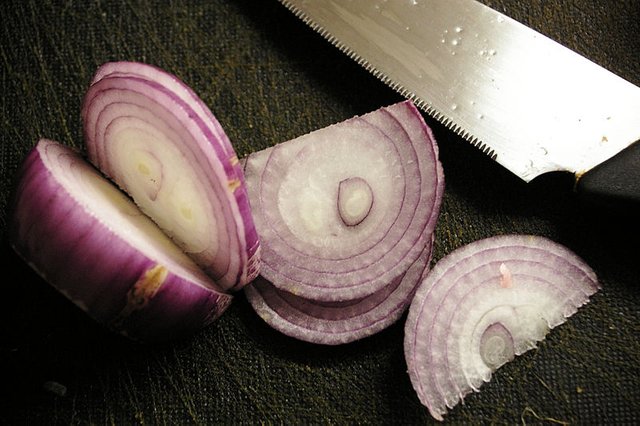
Immediately an onion is cut or diced into small pieces, a chain of chemical reaction is released. The tissues of the onion have molecules enclosed within it which is subject to transformation from the stable molecule it is, to a volatile gas filled with sulphur once the onion is chopped. Small amount of sulphuric acid is produced when the gas comes in contact with the eye. Sulphuric acid is a compound that causes burning, itching and tears.
However, this process is not as simple as it seems because it has taken nothing less than 40 good years for Block and other scientists to get to the root of the matter. Block said in one of his statement that, "the root of the whole matter becomes even more unclear as more compounds are discovered". Let's not take time to discuss how the chain reaction was determined or figured out.
Let's ascertain and confirm the chain reaction
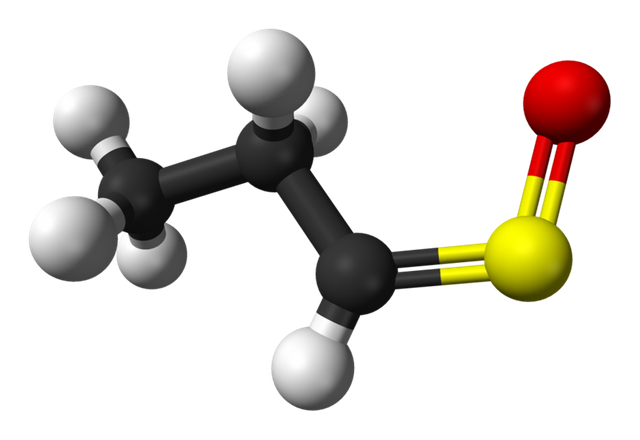
In the 1970s, Block took his time to start working on a way to provide solution to the problem at hand. And it took him few years (which was exactly 1979) before he could figure out the structure of one of the molecules of onions that causes eye irritation in human. Lachrymatory (which is pronounced "Lak-RIM-uh-tor-ee") factor (LF) is the name of the gas that was earlier stated to contain sulfur. The lachrymatory factor in onions that causes thecirritation of eye is known as syn-Propanethial S-oxide (C3H6OS). (lachrymatory is gotten from lacrima, a latin word that means tear).
The reason Block was so concerned about determining the structure of the onion's eye-irritating molecule was because he knew once he can get the structure of the molecule, then it would be very easy for him to know the position of various atoms that makes up the molecule and how those atoms are linked together. Having a knowledge of the structure of LF lead us to a conclusion of how the molecule is produced.
Immediately the skin of the onion is broken, then continous shedding of tears from the eye come into place, and this is why Block made a conclusion that lachrymatory factor (LF) begin as a different molecule. He asserted on uncertain grounds that the chopping of onions must bring about a reaction chemically. A stable molecule that can turn into vapour and burn the eyes without wasting time must have been formed from the chemical reaction, Block thought. At times, There is need for some amazing molecules called "enzymes" to be used in starting off chemical reactions. Enzymes bring about increase of the rate of chemical reactions.
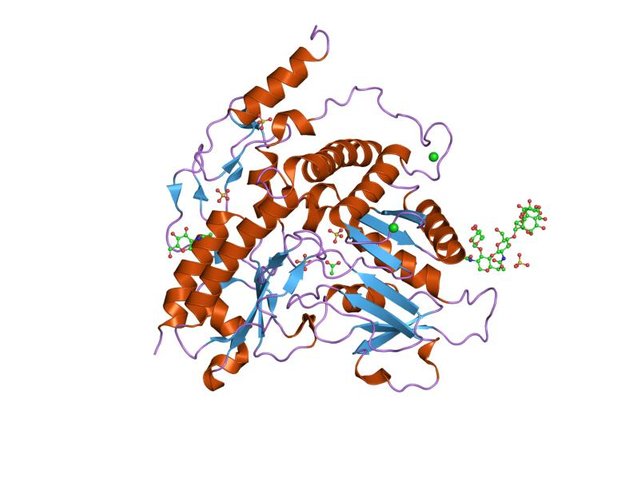
Blocks proved to us that an enzyme called alliinaseaccelerate the rate of chemical reaction that leads to the formation of eye-irritating molecules from the stable molecules known as "sulphoxides" in the onion. It is this alliinase that helps give onions as well as other plants such as garlic their tasty aroma and flavors.
Some set of scientists at a Japanese company in the early 2000s wanted to make onions that would not make people shed tears. An idea came to their mind and they thought they could stop the sulphuric acid that causes tears from forming just by keeping alliinase from catalysing the reaction that leads to its production or formation. Then, they extracted alliinase from the onion and the allinase was combined with sulphoxides but they got no result. However, their effort was not a waste because they discovered another enzyme which is entirely different from alliinase.
The new enzyme they found out was known as "LF synthase". The scientists were of the opinion that alliinase bring about a transformation in the shape of the starter molecule in preparation for LF synthase to act on it, but nobody had a clear understanding of this. Scientists and researchers couldn't determine the structure of the LF synthase, thus, the complete chemical reaction became a mystery to them.
The act of crystal formation
A biochemist, Marcin Golczak and a team of researchers carry out a test to have an understanding of the formation of eye-irritating LF. The LF synthase is changed fundamentally into a crystal as a basic step to achieving their aim. This makes it quite easier for them to create a visual representation of the structure of the eye-irritating LF using a technique called X-ray crystallography.

Image source: Creative Commons Attribution-Share Alike 4.0 International license.
The growth of crystals begin to occur in a mixture of the enzyme and the acid immediately it was mixed by the reserachers. Then, liquid nitrogen and a special camera was used to freeze and shoot beams of X-ray respectively at the crystals. The X-ray seperated and go in different directions immediately the beams came in contact with the crystal. Then, they took a measurement of the angles of the beams that scattered and through that, they were able to create or build successfully a picture of the enzyme in 3-dimensions.
Marcin Golczak and his team was able to produce a model and give a representation of what the enzyme looks like after creating a connection between the 3-dimensional picture and the previous findings about the functions of the enzyme as proved by other research that was done.
Now, let's get an understanding of why some onions causes more irritation to the eye than others.
The likely reason for this is the quantity of sulphur an onion has gotten from the soil during its growth. What this means is that; the higher the sulphur absorbed by the onion, the higher the irritation it causes to the eye. When a soil has low amount of sulphur, the yield and pungency of the onion are reduced. There are two basic factors that determine the amount of sulphur absorbed by onions. These factors are stated as follows:
- The Soil
- The growing condition
How to avoid the tears

The tears caused by these onions can be avoided by wearing a safety google which protect the eye from the gases coming off the onions, but that might be too much to exercise in a kitchen plus this might not be too effective since your mouth and nose are still open to the chemical. Onions can also be heated before it is cut or diced into small pieces to alter the original state of the enzyme that causes tears. You can also cut onions in a bowl of water to limit contact with the gases coming off it. Refrigerating the onions can also help to avoid the tears.
Another method I would suggest is the use of salt. I am from a part of the where we use grinding stones to crush peppers and onions because we think it makes our food tastier than using other mechanical means. As such, I could remember those days when I was a child and my mother was like; Samuel come and crush these peppers and onions for me using a grinding stones. And then, I replied her by saying; Im sorry mum! I can only grind the peppers but not the onions because it would cause a sting in my eyes. She smiled and instructed me to sprinkle some salts on the onions before grinding it.
I followed her instruction and it really worked for me. But I think this method can only work if you are to grind your onions manually.
REFERENCES
Never knew the onion make us "cry" is something this big. Thank you for sharing.
The work of scientists and researchers have made almost everything around us big. Am glad to let you know that.
Thanks for coming around
You are welcome
Congratulations @olasamuel! You have completed the following achievement on the Steem blockchain and have been rewarded with new badge(s) :
Click on the badge to view your Board of Honor.
If you no longer want to receive notifications, reply to this comment with the word
STOPDo not miss the last post from @steemitboard:
This post has been voted on by the SteemSTEM curation team and voting trail in collaboration with @curie.
If you appreciate the work we are doing then consider voting both projects for witness by selecting stem.witness and curie!
For additional information please join us on the SteemSTEM discord and to get to know the rest of the community!
Congratulations @olasamuel! You have completed the following achievement on the Steem blockchain and have been rewarded with new badge(s) :
Click on the badge to view your Board of Honor.
If you no longer want to receive notifications, reply to this comment with the word
STOPDo not miss the last post from @steemitboard: